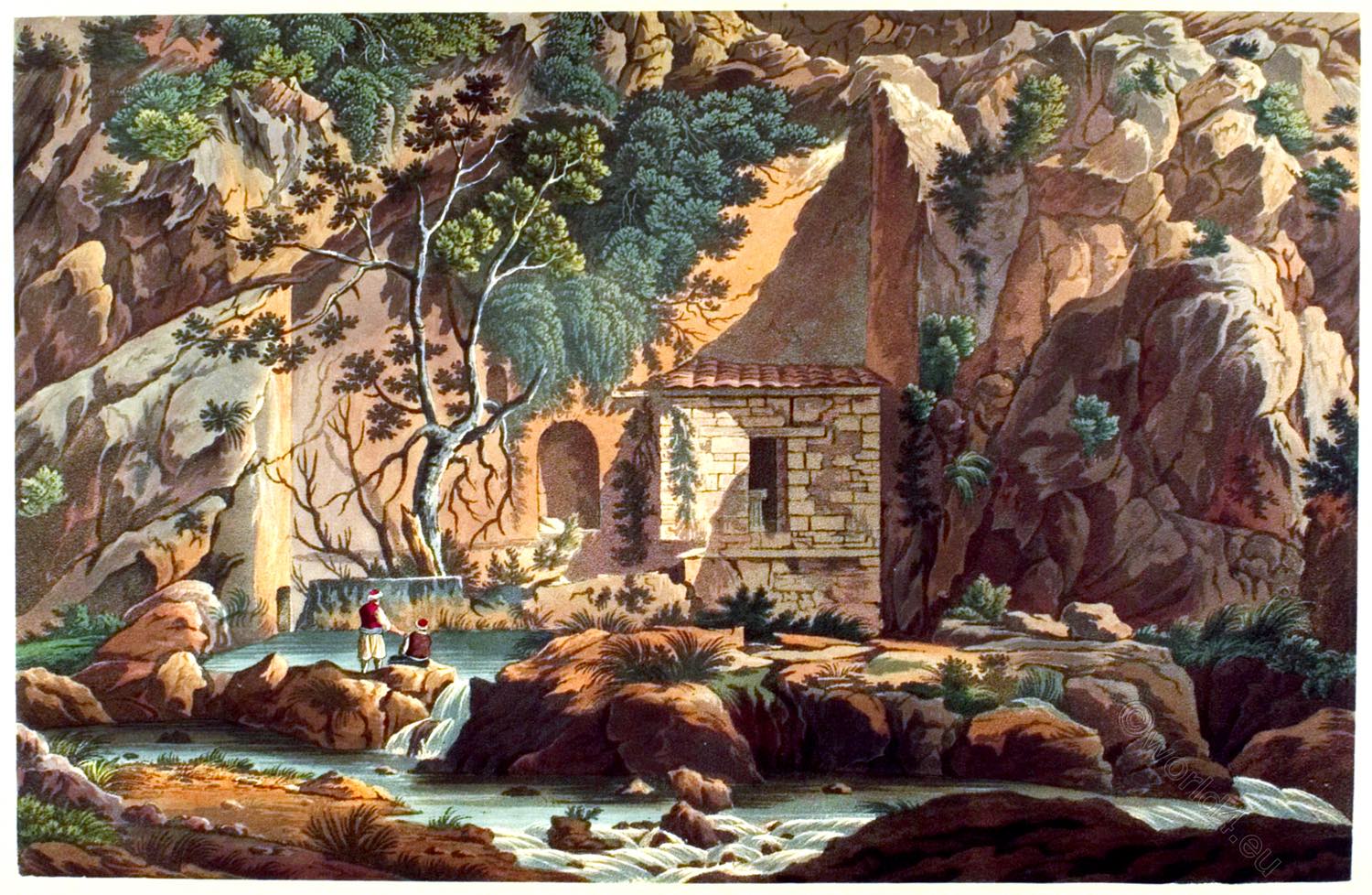The Castalian Spring (Ancient Greek Κασταλίη Kastalia or Kastaliē, Modern Greek Κασταλία πηγή Kastalia pigi) is a spring at the foot of Mount Parnassos near Delphi in Greece.

The spring is located near the sanctuary of Delphi, halfway between Marmaria and the sanctuary itself. In ancient times, pilgrims purified themselves at this spring before entering the sacred precincts of Delphi. Another minor spring, ‘Kassotis’, was located inside the temenos, at the place where the Pythia or Pythoness performed ablutions before pronouncing her good wishes. Priests and people who wanted to have a consultation with the oracle also had to purify themselves at the spring.
The Spring was named after the mythical nymph Kastalia, who threw herself into the spring while fleeing from the courting Apollo. In ancient times, the spring was dedicated to Apollo and the Muses. Its water was used by the visitors of Delphi for ritual ablutions. If you drank from its water, so the legend goes, the spring gave you the gift of poetry. At that time it was so famous that its name was sometimes used as a synonym for Delphi itself.
Two fountains fed by the sacred spring have been preserved. The first, the oldest (beginning of the 6th century BC), mentioned by authors such as Pindar or Herodotus, has a marble-covered pillar surrounded by benches. The second, located about 50 metres above the previous one, is of Hellenistic or Roman age (probably belonging to the 1st century B.C.) and is the one that Pausanias saw, with niches carved in the rock to receive votive gifts.
It is still used today for the drinking water supply of modern Delphi. Its water otherwise flows as a torrent called Arkoudorrema (Αρκουδόρρεμα) southwards into the valley, where it flows into the Plistos after just under two kilometres.
The Castalian Spring.
by Edward Dodwell.
No. 3
THIS fount is clear, and yields an excellent beverage, though a draught of its waters is imagined by some travelers, still to be followed by the effects anciently attributed to them: in one producing poetic frenzy; in another manifesting its powers in more disagreeable consequences; but if similar results were the uniform produce of the Castalian Spring, we might expect to find all the inhabitants of Kastri worn and pallid under the influence of frigid shiverings or poetic ecstasies.
The water oozing from the rock was in ancient times conducted into a hollow square, where it was retained for the use of the Pythia and the oracular priests. Some steps that are cut in the mass formed a descent to this bath. The sides of the precipice, which inclose the fount, have been cut and faced, and it was no doubt anciently covered, as it cannot be well imagined that the pythoness laved her holy limbs in open day. A circular niche, probably intended for the reception of a statue, is cut in the rock. A small arch and passage is found on the western side a little above the usual level of the spring; this was made to let off the superfluous water. On the side represented is the diminutive chapel of Saint John, which seems to have been contrived to exhibit the triumph of the cross over the udoration of Apollo and the Muses.
The fountain is overshadowed by a fig-tree and pendant ivy. The roots have penetrated the fissures of the rock, while the foliage throws a cool and refreshing gloom over this interesting spot. More forward, a majestic plane-tree defends the whole from the rays of the sun, which shines upon it only a few hours of the day.
Homer, in his Hymn to Apollo, celebrates the fount Delphousa at this place, in all probability alluding to the Castalian Spring.
The water of this spring sometimes overflows in a copious stream, forming several small but pretty cascades, the appearance of which is highly picturesque. The sides are covered with fine water-cresses.
Source: Views in Greece. Drawings by Edward Dodwell. Rod Well and Martin, London, 1821.
Continuing
